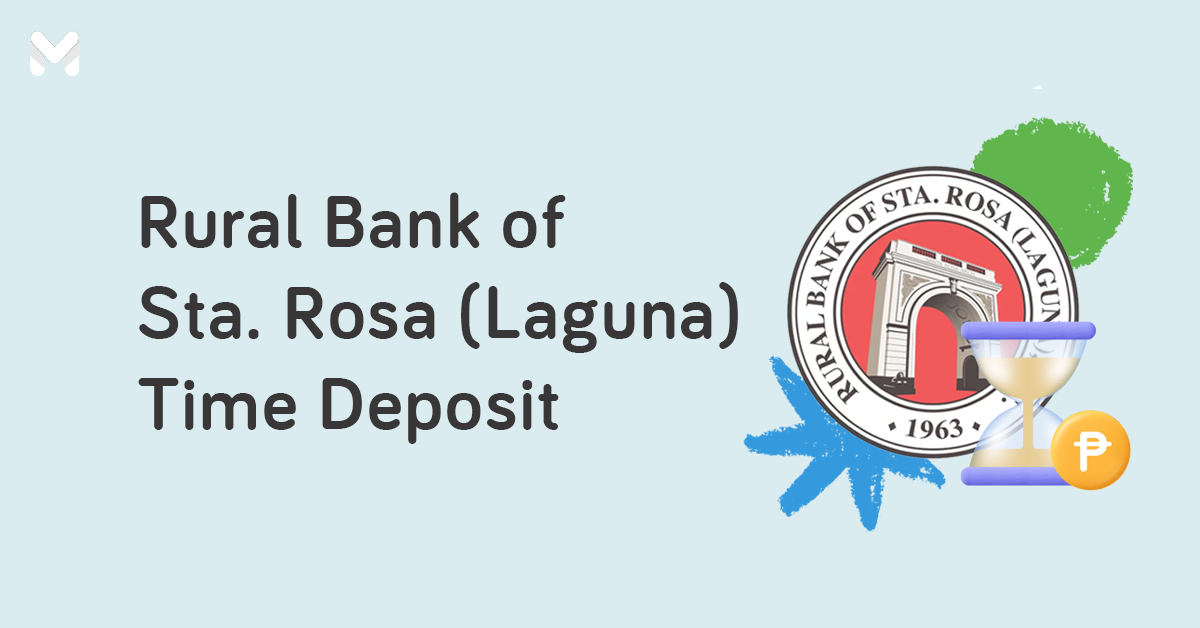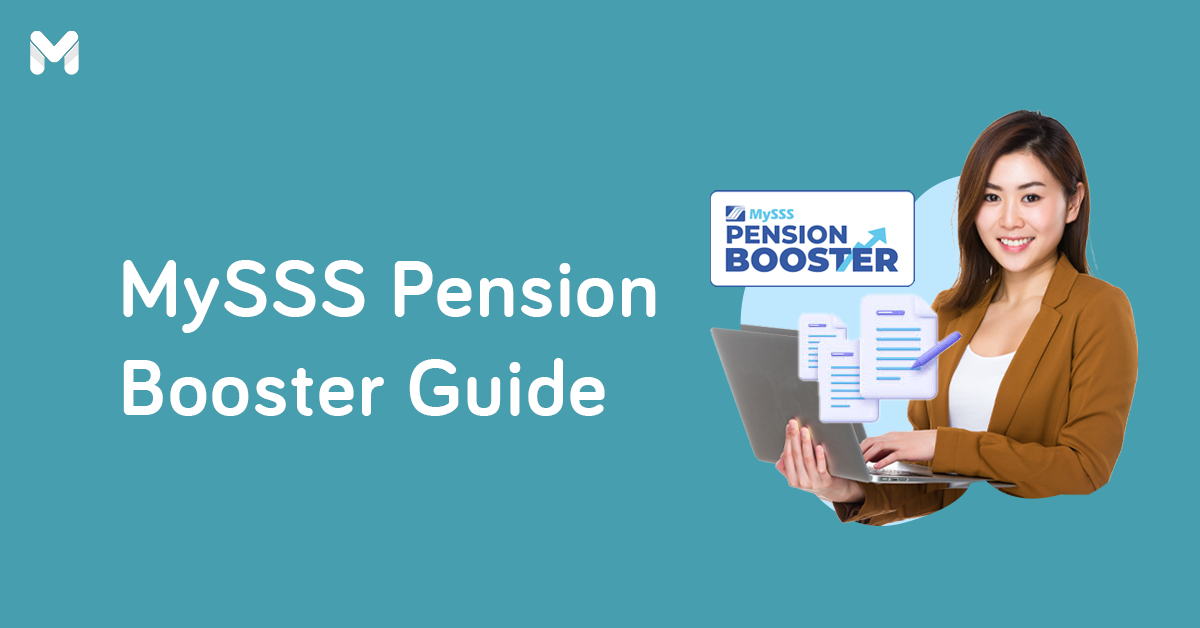The problem with retirement planning in the Philippines—aside from the lack of it—is the limited investment choices available for Filipinos who want to save up for when they retire.
Addressing that challenge, the government offers the Personal Equity and Retirement Account or PERA as an additional source of retirement income to help Filipinos achieve a comfortable and financially secure retirement.
Will a PERA investment suit your retirement goals? Here's a guide to help you decide whether it's worth investing in PERA and how to open a PERA account in the Philippines.
What is PERA Investment?
PERA is a long-term and tax-free voluntary retirement investment program in the Philippines that was created through Republic Act 9505.[1]
Think of PERA as the Roth IRA or 401k equivalent in the Philippines. In the U.S., a Roth IRA is a special Individual Retirement Account (IRA) for which you pay taxes on money going in and then enjoy tax-free future withdrawals;[2] while a 401(k) is a workplace retirement plan that lets you make annual contributions up to a certain limit.[3]
The PERA law encourages Filipinos to save money for retirement through generous tax benefits for investment earnings held for five years or longer until age 55.
This individual retirement account in the Philippines is designed as an additional retirement savings option. PERA savings supplement rather than replace GSIS or SSS pensions and retirement pay from private employers.
Read more:
- SSS PESO Fund vs MP2: Which is the Better Savings Program for You?
- Work, Invest, Save, and Prosper: SSS WISP vs WISP Plus
Who Can Create a PERA Account?
.png?width=600&height=400&name=Pics%20for%20blog%20-%20600x400%20(41).png)
Filipinos aged 18 and above with a Tax Identification Number (TIN), whether employed or self-employed, may open a PERA account. Below are the basic eligibility criteria and requirements:
- Filipino and at least 18 years old (below 18 years old can open a PERA account through a guardian)
- Has a source of income
- Has a Tax Identification Number (TIN)
- Owns a current or savings account from a PERA administrator bank
- Valid IDs (Driver's License, Passport, UMID, SSS ID, etc.)
- Latest copy of Income Tax Return (ITR)
How Much Can I Invest in PERA?
You can start investing in PERA for as low as ₱1,000. But each PERA investor in the Philippines may contribute up to ₱200,000 every year,[4] while OFWs can invest up to ₱400,000 yearly.
Note that you can invest more, but any excess amount is not eligible for tax relief.
Related: Where Can I Invest My 1,000 Pesos? 9 Affordable Investments to Consider
Why Should I Open a PERA Retirement Fund?
.png?width=600&height=400&name=Pics%20for%20blog%20-%20600x400%20(40).png)
Compared to regular savings accounts and time deposits, a PERA retirement plan yields higher investment returns because it provides tax exemptions on investment income and allows investors to choose investment products that fit their needs and risk appetite.
👍 Higher Investment Returns Through Tax Benefits
PERA investors enjoy the following tax advantages:
- Income tax credit - You'll get a 5% tax credit on your total annual PERA contributions. You can use this tax credit to pay your income tax liabilities. Let's say your income tax is ₱150,000, and your total PERA contribution is ₱100,000. Because you're entitled to a 5% tax credit of ₱5,000, you'll pay only ₱145,000 in income tax for the year.
- Tax-free investment income - Looking for tax-free investments in the Philippines? As a PERA , you’ll be exempted from final withholding taxes, capital gains tax, and regular income tax.
- Exemption from estate tax - In case of the PERA contributor's death, the money will be released to the heirs or legal beneficiaries without paying estate taxes and going through the lengthy probate process.
👍 Ability to Choose PERA Investment Products
Unlike with GSIS/SSS and Pag-IBIG contributions, you have control over where to invest your money as a PERA contributor.
You can grow your retirement savings in different PERA investment products that suit your risk profile, whether conservative, moderate, or aggressive.
For example, young investors in their 20s or 30s can beat inflation and maximize their returns by putting their money in high-risk investment vehicles such as a PERA equity fund.
Those with conservative to moderate risk appetites can opt for a PERA money market fund or a PERA bond fund.
Read more: To Invest or Not: The Best Investments for Every Risk Appetite
What are the Disadvantages of a PERA Investment?
Any investment, such as a PERA account, has its drawbacks. Here are some you should take note of.
👎 Investment Risks
Like other investment types, PERA comes with certain risks, depending on your chosen investment product.
For example, investing in a PERA equity fund exposes the investor to the usual risks of a stock investment, like fluctuating stock prices.
The risks associated with your PERA investment product will be explained when you open a PERA account. Make sure to understand the risks before you sign the dotted line.
👎 Penalties for Early Withdrawals
Wondering when you can withdraw your PERA investments? Because you're investing for retirement through PERA, you can only touch your funds once you're 55 and you've contributed for five years or longer. The amount can be paid in a lump sum or as a monthly pension for a lifetime or a certain period.
Earlier than that, you can fully or partially withdraw your PERA contributions, but you'll no longer enjoy the tax incentives.
Exempted from early withdrawal penalties are PERA contributors with a permanent disability or those hospitalized for over 30 days due to an accident or illness.
👎 Administrator Fee and Other Service Fees
Investing in PERA comes with additional costs. You'll pay a 1% administrator fee plus 0.5% to 1.5% trust and custodian fees for every contribution.
To minimize these fees, pay a lump sum yearly rather than making monthly contributions.
Learn more about whether you should invest in PERA in this video by financial planner and entrepreneur Marvin Germo:
Where are PERA Contributions Invested?
PERA contributions may be invested in the following:
- Unit investment trust funds (UITFs)
- Mutual funds
- Government securities
- Annuity contracts
- Exchange-traded bonds
- Insurance pension products
- Pre-need pension plans
- Shares of stocks listed and traded in the Philippine Stock Exchange
- Other investment products authorized for PERA purposes
How Much Can I Earn from a PERA Investment?
-1.png?width=600&height=400&name=Pics%20for%20blog%20-%20600x400%20(39)-1.png)
The earnings you will receive from a PERA investment in the Philippines depends on your choice of investments. Different products have different returns.
When you invest in something with the potential for higher returns, your investment also faces a higher risk. On the other hand, modest risks usually mean modest returns.
How to Invest in PERA Philippines
To start your PERA investment, you must open a PERA account through an administrator.
You can visit banks, financial institutions, trust entities, investment companies, stock brokerages, and insurance companies accredited by the Bangko Sentral ng Pilipinas, the Securities and Exchange Commission, and the Insurance Commission.
When you open a PERA account, you can start making contributions through your bank account with your chosen administrator or via over-the-counter cash or check payments.
📋 PERA Investment Account Requirements
Here are some of the basic requirements you will need to submit when opening a PERA account:
- A savings or checking account with any bank
- One valid ID
- Tax Identification Number (TIN)
- Copy of latest Income Tax Return (ITR) or any document that can validate the TIN
- Initial investment (starts at ₱1,000)
👉 How to Open a PERA Account in the Philippines
- Visit a branch where PERA is available. Contact the bank first to ask which branches you can go to open an account.
- Fill out an application form, a Client Suitability Assessment, and other related PERA documents.
- Submit the PERA account opening requirements.
👉 How to Open a PERA Account via PERA Seedbox
With an objective to give Filipinos a chance to save for their retirement 24/7, wherever they are in the world, the BSP launched Digital PERA in September 2020.[5]
Administrated by ATRAM, Digital Pera is available via Seedbox. You can invest in PERA via BPI, LANDBANK, PNB, or Metrobank for as low as ₱1,000.
- Visit the PERA portal at the Seedbox website at www.pera.seedbox.ph.
- Create an account by clicking SIGN UP.
- Provide your personal information.
- Prepare your valid ID and TIN.
- Fill out the assessment to determine your investment risk profile.
- Select the PERA fund.
- Settle your investment account through any of the available payment channels.
Best PERA Accounts in the Philippines
Here are some of the best PERA accounts you can open in the Philippines.
📌 BPI PERA Equity Fund

- Minimum initial investment: ₱1,000
- Trust fee: 1.50%
The BPI PERA Equity Fund is for long-term capital growth from equity securities issued by Philippine-domiciled companies.
There's no minimum holding period and early redemption penalty, but the recommended investment horizon is at least five years. BPI PERA Equity Fund is available exclusively and directly through BPI Wealth.
📌 BPI PERA Money Market Fund
- Minimum initial investment: ₱1,000
- Trust fee: 1.50%
If you want to achieve liquidity and enjoy a stable income from a diversified portfolio of short-term fixed-income instruments, consider the BPI PERA Money Market Fund.
As a PERA investment, it can earn more than regular investments because of its tax features. The recommended investment horizon for this money market fund is at least three years.
📌 LANDBANK PERA Money Market Fund
- Minimum initial investment: ₱5,000
- Minimum additional placement: ₱1,000
- Minimum holding period: 30 days
- Trust fee: .50%
If you prefer to invest in a conservative PERA-accredited fund that offers high liquidity and decent returns, check out this PERA money market fund from LANDBANK. It invests in short-term and flexible investments and poses minimal risk to your capital.
📌 LANDBANK PERA Bond Fund
- Minimum initial investment: ₱5,000
- Minimum additional placement: ₱1,000
- Minimum holding period: 30 days
- Trust fee: 1%
Consider the LANDBANK PERA Bond Fund if you prefer a moderate PERA-accredited fund. It works to generate a moderate but stable income stream by investing in peso-denominated fixed-income securities.
📌 PNB PERA Bond Fund

- Minimum initial investment: ₱1,000
- Minimum additional placement: ₱1,000
- Minimum maintaining balance: ₱1,000
- Trust fee: 1%
The PNB PERA Bond Fund is a fixed-income fund for the moderate investor risk profile. It has a minimum investment horizon of up to five years.
📌 Metrobank PERA Equity Fund

- Minimum initial investment: ₱5,000
- Minimum additional placement: ₱5,000
- Minimum maintaining balance: ₱5,000
- Minimum holding Period: 30 days
- Early redemption charge: 50% of total income from the redeemed amount
- Trust fee: 1%
For aggressive investors ready to take on higher risk for higher potential returns, you can explore the Metrobank PERA Equity Fund, with fund assets comprised of equities comprising deposits and the PSEi. The investment horizon is at least five years.
Further reading: SEC Warning: Don’t Fall for These Investment Scams in the Philippines
Final Thoughts
Is PERA a good retirement plan? Yes, because it’s similar to the Individual Retirement Account (IRA) and 401(k) retirement plans in the United States. PERA is a powerful tool that will help ensure financial security when you retire.
The tax benefits outweigh the risks, which you can minimize by being strategic with your PERA investments. If you're looking to diversify your portfolio and start saving early for retirement, then it makes sense to open a PERA account in the Philippines.
Sources:
- [1] Personal Equity and Retirement Account (PERA) Act of 2008
- [2] What Is a Roth IRA? (Investopedia, 2023)
- [3] What Is a 401(k) and How Does It Work? (Investopedia, 2023)
- [4] Maximum PERA contributions doubled (Inquirer, March 2023)
- [5] Digital PERA enhances retirement savings law: BSP (ABS-CBN News, 2020)
DISCLAIMER: The opinions expressed by the writer are theirs alone, and do not reflect the opinions of Moneymax and/or its affiliates or any employee thereof. Neither Moneymax or its affiliates are responsible for the accuracy of any of the information supplied by the guest writer. The opinions expressed in this blog are for general informational purposes only and are intended to provide education about the financial industry.
Nothing in this blog constitutes investment or financial advice or any recommendation that any security, portfolio of securities, investment product, transaction or investment strategy is suitable for any specific person. This material does not take into account your personal circumstances, finances, goals and/or objectives; all of which are unique to you. Readers must make an independent decision regarding investments or strategies mentioned on this blog or elsewhere on www.moneymax.ph. We strongly consider seeking advice from your own financial or investment adviser before taking any action. We do not make any representation or warranty as to the accuracy, completeness or correctness of the information set out in this article.










